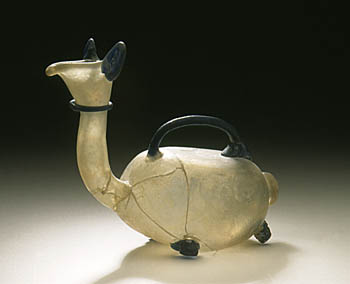
allahallahHowever, there has been much concern during all but the earliest stages of Islamic history over "graven images." Because of this, Islamic religious art has often avoided depicting people or animals. Religious sculpture has generally been avoided as well. The concern has not been so much about creating "false idols" that might be worshipped in lieu of God, but rather that the artist should not try to "play God" by creating pictures of the world. In addition, any attempt to portray God visually is not favored, as God is seen as inexpressible. Another reason sometimes cited is that pictorial art implies that the things being portrayed have a certain stability and independence to them, when according to Islamic belief, they are all in flux, existing only through the will of God. As the 28th Surah states, "Everything is perishing except His countenance."
allahallahThese theological concerns led to the creation of art that might be labeled aniconic. Such art emphasizes the basic elements of art, line, color, and especially geometry, as explained in other sections of this website. Although such art does not contain narrative elements in the way Christian frescoes might, for example, Islamic religious art does have many connections to Islamic religious thought, as will be explored here.